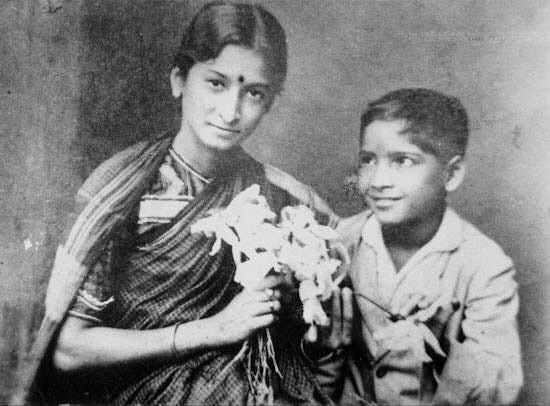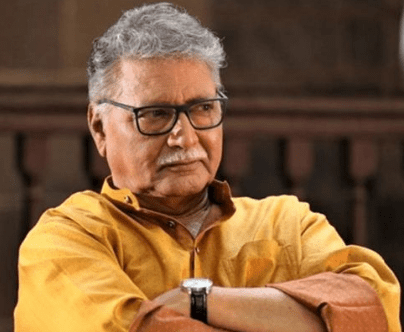When Kamlabai Gokhale passed away on May 17, 1998, aged 98, she had long been forgotten despite being a massively important figure.

The pioneering actress became the first female to play a lead role in a movie in Indian cinema history and later performed the first ever dance number. To mark her death anniversary this week, Eastern Eye decided to remember the pathbreaker, who opened the cinematic door for all the many women who have followed in her giant footsteps since then.
When trailblazing filmmaker Dada Saheb Phalke was making Indian cinema’s first movie Raja Harishchandra (1913), he couldn’t find any women to play the lead role and was even turned down by prostitutes, who thought acting was a disrespectful profession. He was forced to cast a male cook’s assistant named Salunke as the female lead. After the movie became a major success, Phalke was determined to cast a female for his second movie Mohini Bhasmasur in 1913.
Meanwhile a girl named Kamlabai Gokhale was born at the turn of the century and by the time she was three years old, her parents had split. Her mother Durgabai Kamat was separated from her husband, and had few options to support her young daughter, so decided to join a travelling theatre company. This outraged the conservative society she grew up in and the young woman was ostracised. Gokhale grew up performing on stage with her mother, despite the many social restrictions imposed on women.
She recalled towards the end of her life, “My mother was not only beautiful but very talented as well. She could paint and sing and was proficient at instruments like the been, dilruba, kartal and sitar.” While her mother was educated, Gokhale never went to school since they were always on the move, and was taught at home.
Despite there being a shortage of women in acting, the mother-daughter were hampered by a conservative society and men, who played female leads on stage. Gokhale recalled: “In those days, men played the female roles. So, the fiercest opposition to my mother and me came from these men – we were their first natural enemies. Some companies just would not hire women as a rule.”
She started acting on stage from the age of four and used it as training to learn lines, act, and project her voice. While male actors resented the mother and daughter being on stage, Phalke finally found females to act in his film from the theatre company they worked in. And as an added bonus, they had acting experience.

Gokhale was cast in the lead as Mohini and her mother was given the supporting role of Parvati, consort of the god Shiva. They became the first females to officially act in an Indian film and proudly attended the film’s premiere.
By acting in the movie and promoting it, they opened the door for other women. They would be cast in subsequent films to become the first female stars, and this included Gokhale doing a dance, which was seen as ground-breaking.
Recalling the days of shooting those first films with Phalke, Gokhale had said: “All his equipment had come from England. We stayed at his house in Nasik and would wake up at 4am to travel three hours away, by bullock cart. From dawn till dusk, we would be shooting. We had no artificial lights like the ones used today. All the shooting would have to be done in available light with reflectors.
“Dadasaheb was very patient and understanding and would explain in great detail all that he wanted us to do. Once the rehearsals were done to his satisfaction, he proceeded for a ‘take’. Though there was no sound, we used to mouth the words of the dialogue. The unit lived and worked together like one big family.”
By the time Gokhale was 15, she was a big celebrity and got married soon after, to an actor, who had previously played female roles on stage. She then got to star opposite her husband in theatre plays, which toured across the country to packed houses. Meanwhile, other women started to step in front of the camera. Despite being an early pioneer, she wasn’t able to profit from the silent cinema boom in the 1920s. By the time she turned 25, Gokhale was pregnant with her third child and soon became widowed.
Being a widow, a mother of three children, and ostracised from her family for being an actress, she now had to take care of her children, mother, and extended family. “I was not considered respectable enough though I was just like them, a mother with children. The only advantage they could think of was getting free passes for a show.”

She worked with various theatre companies and got bit parts in movies. By the time talkies emerged in the 1930s, silent cinema was over, and less people went to watch stage plays so her work dried up. As different generations of leading ladies emerged, Gokhale descended into relative poverty and was forgotten over time.
Her son Chandrakant Gokhale and grandson Vikram Gokhale continued the family tradition by building successful careers in theatre and cinema. Vikram, in particular, became a noted name in acting.
Even though Gokhale passed away in obscurity at almost 100 years old, what no one could take away from her was that she would always be Indian cinema’s first leading lady. Looking back at her journey, she said: “All this has been tough, but then anything worthwhile is always tough.”
